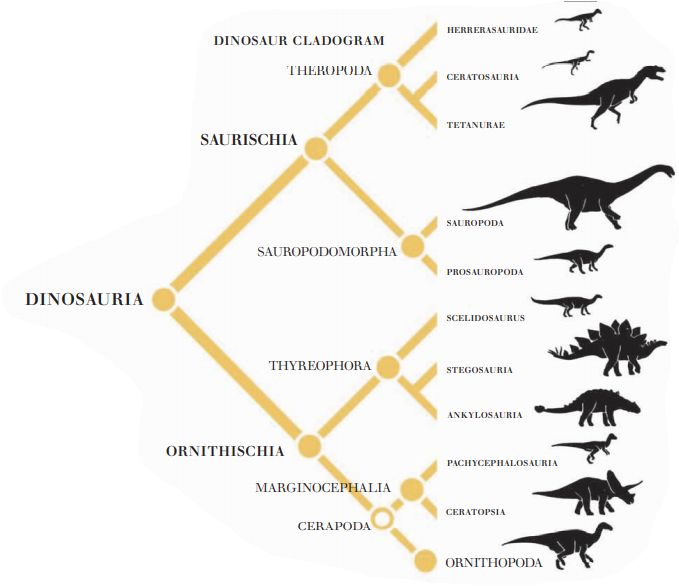
THE DINOSAURS WERE A LARGE GROUP of reptiles that were the dominant land vertebrates (animals with backbones) for most of the Mesozoic era (245–65 million years ago). They appeared some 230 million years ago and were distinguished from other scaly, egg-laying reptiles by an important feature: dinosaurs had an erect limb stance. This enabled them to keep their bodies well above the ground, unlike the sprawling and semisprawling stance of other reptiles. The head of the dinosaur’s femur (thigh-bone) fits into a socket in its pelvis (hip-bone), producing efficient and mobile locomotion. Dinosaurs are categorized into two groups according to the structure of their pelvis: saurischian (lizard-hipped) and ornithischian (bird-hipped) dinosaurs. In the case of most saurischians, the pubis (part of the pelvis) jutted forward, while in ornithischians it slanted back, parallel to the ischium (another part of the pelvis). Dinosaurs ranged in size from smaller than a domestic cat to the biggest land animals ever known. The Dinosauria was the most successful land vertebrates ever and survived for 165 million years until most became extinct 65 million years ago.








